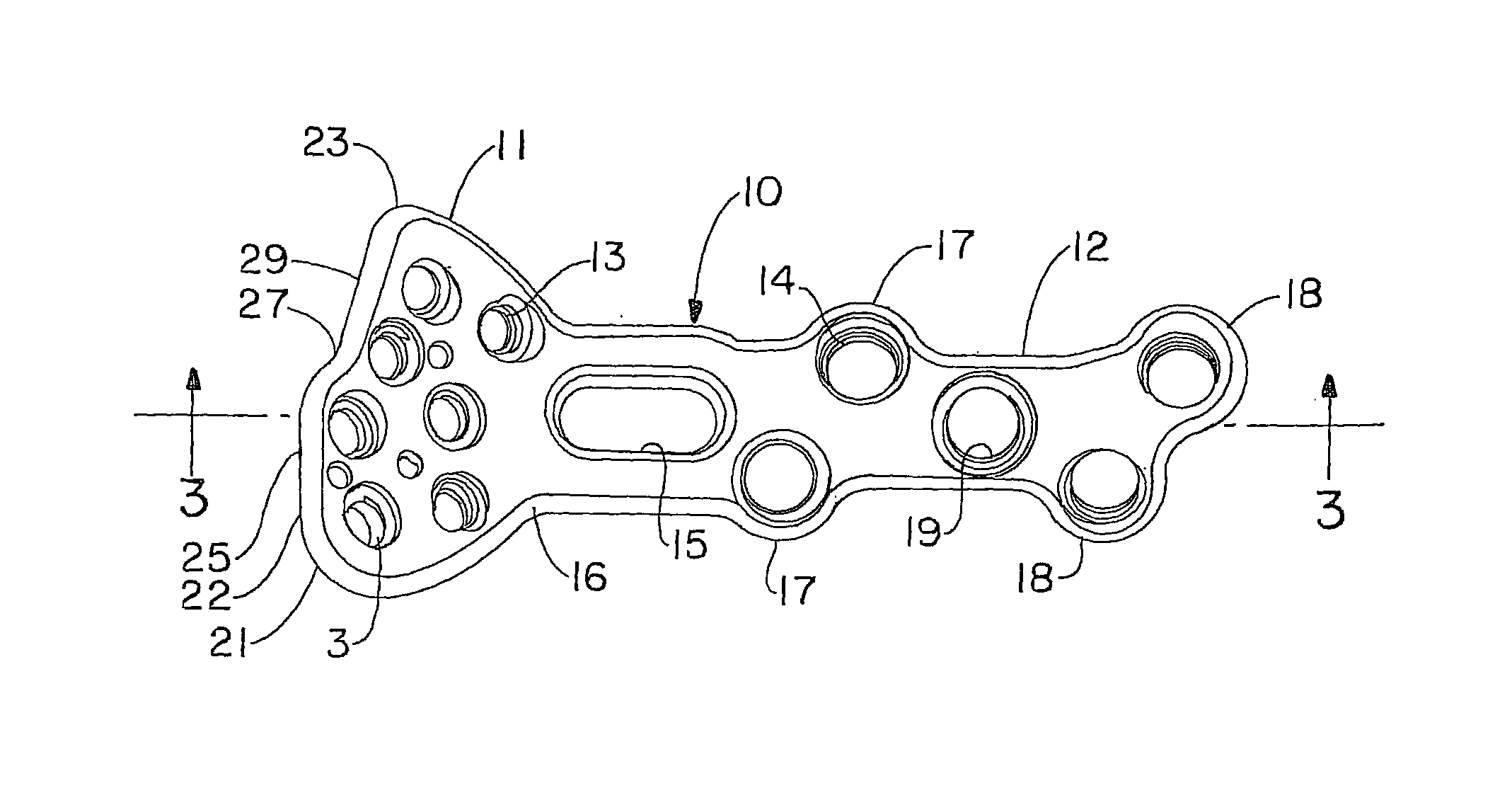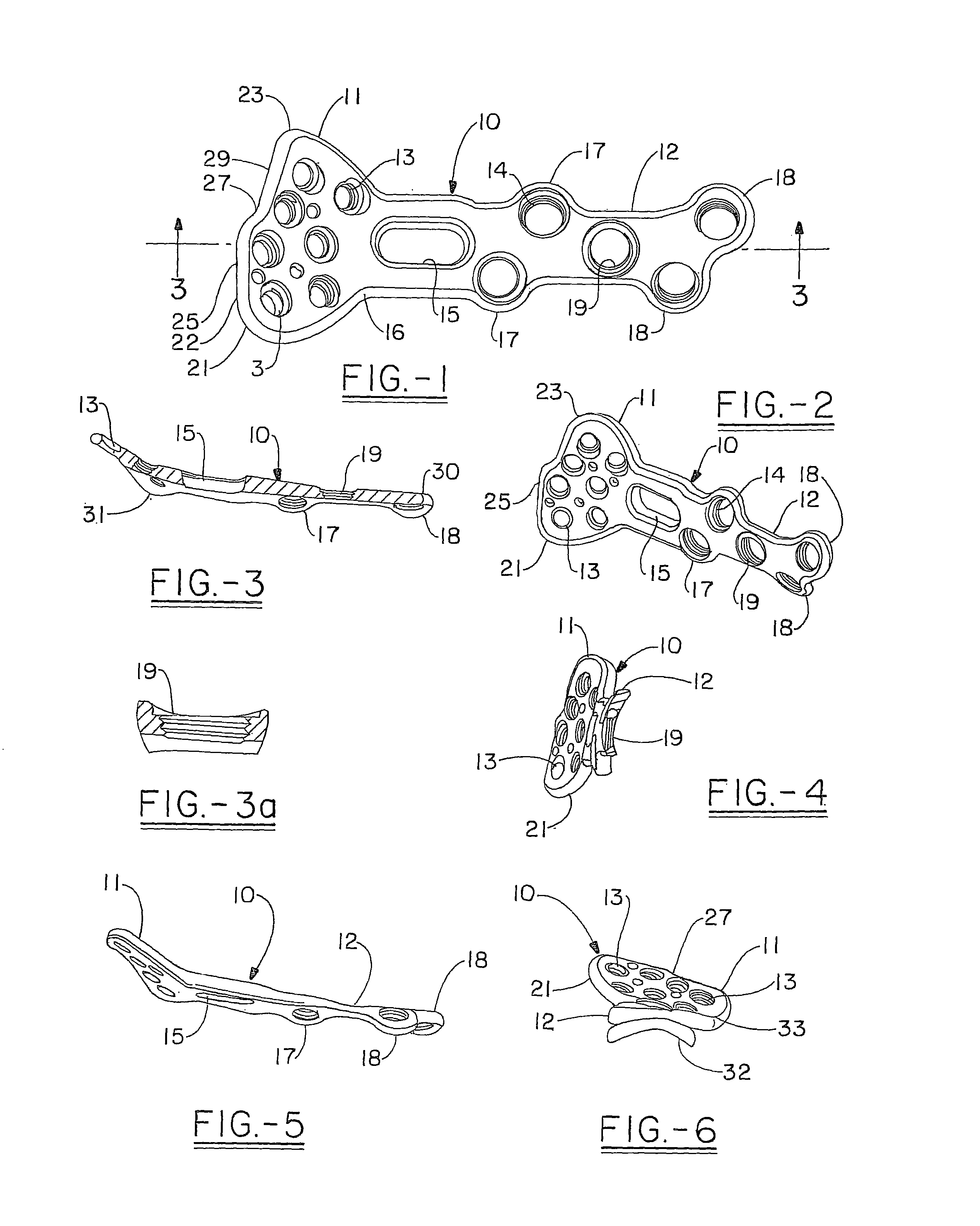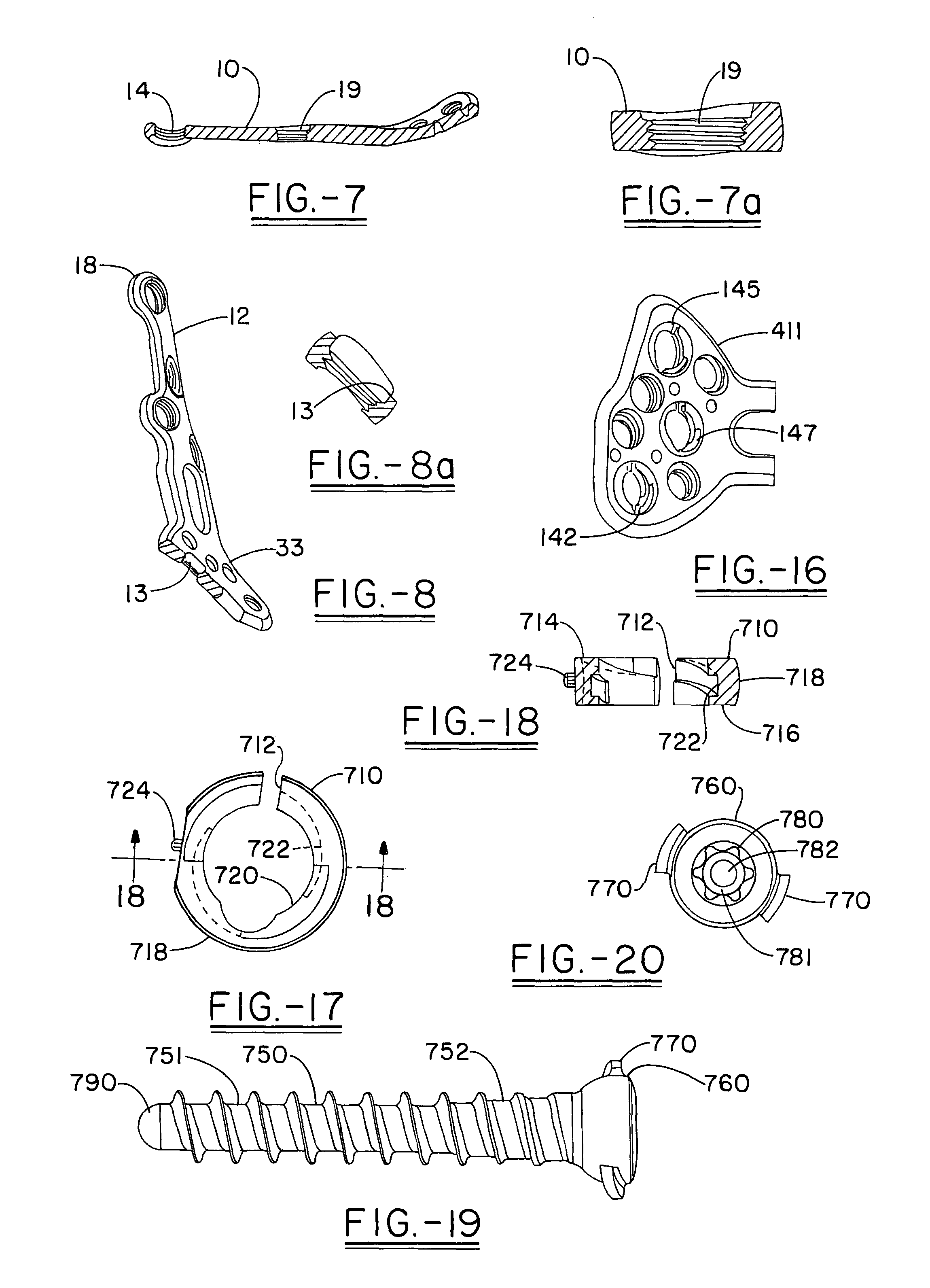Orthopedic plate
a technology of orthopedic plate and bone plate, which is applied in the field of orthopedic plate, can solve the problems of loss of function, early onset of arthritis, and damage to the bones themselves, and achieve the effects of avoiding interference of screws in the bone plate, avoiding fracture, and avoiding fractur
- Summary
- Abstract
- Description
- Claims
- Application Information
AI Technical Summary
Benefits of technology
Problems solved by technology
Method used
Image
Examples
Embodiment Construction
[0056]The present invention relates to an orthopedic plate that can be used to stabilize the fracture of bone such as a radial bone, and in particular to the longitudinally extending plate portion, which tends to be placed proximally to the head, in the event that there is one.
[0057]A first embodiment of the plate is shown generally at 10 in FIG. 1 which includes a first, most distal portion or head 11 which has a profile from the top view similar to the palm of a hand, or which is shaped like a truncated heart, or a modified kidney shape. The head 11 slopes upward in a complex and organic topography away from the more elongated inversely curving proximal portion 12 of the plate. The head 11 includes a plurality of holes 13 for pegs, which holes can be internally threaded or not, or can also include means to provide for a variable locking axis. The proximal plate portion 12 also includes a plurality of holes 14 for screws, which similarly can include internal threads, or which can b...
PUM
 Login to View More
Login to View More Abstract
Description
Claims
Application Information
 Login to View More
Login to View More - R&D
- Intellectual Property
- Life Sciences
- Materials
- Tech Scout
- Unparalleled Data Quality
- Higher Quality Content
- 60% Fewer Hallucinations
Browse by: Latest US Patents, China's latest patents, Technical Efficacy Thesaurus, Application Domain, Technology Topic, Popular Technical Reports.
© 2025 PatSnap. All rights reserved.Legal|Privacy policy|Modern Slavery Act Transparency Statement|Sitemap|About US| Contact US: help@patsnap.com



